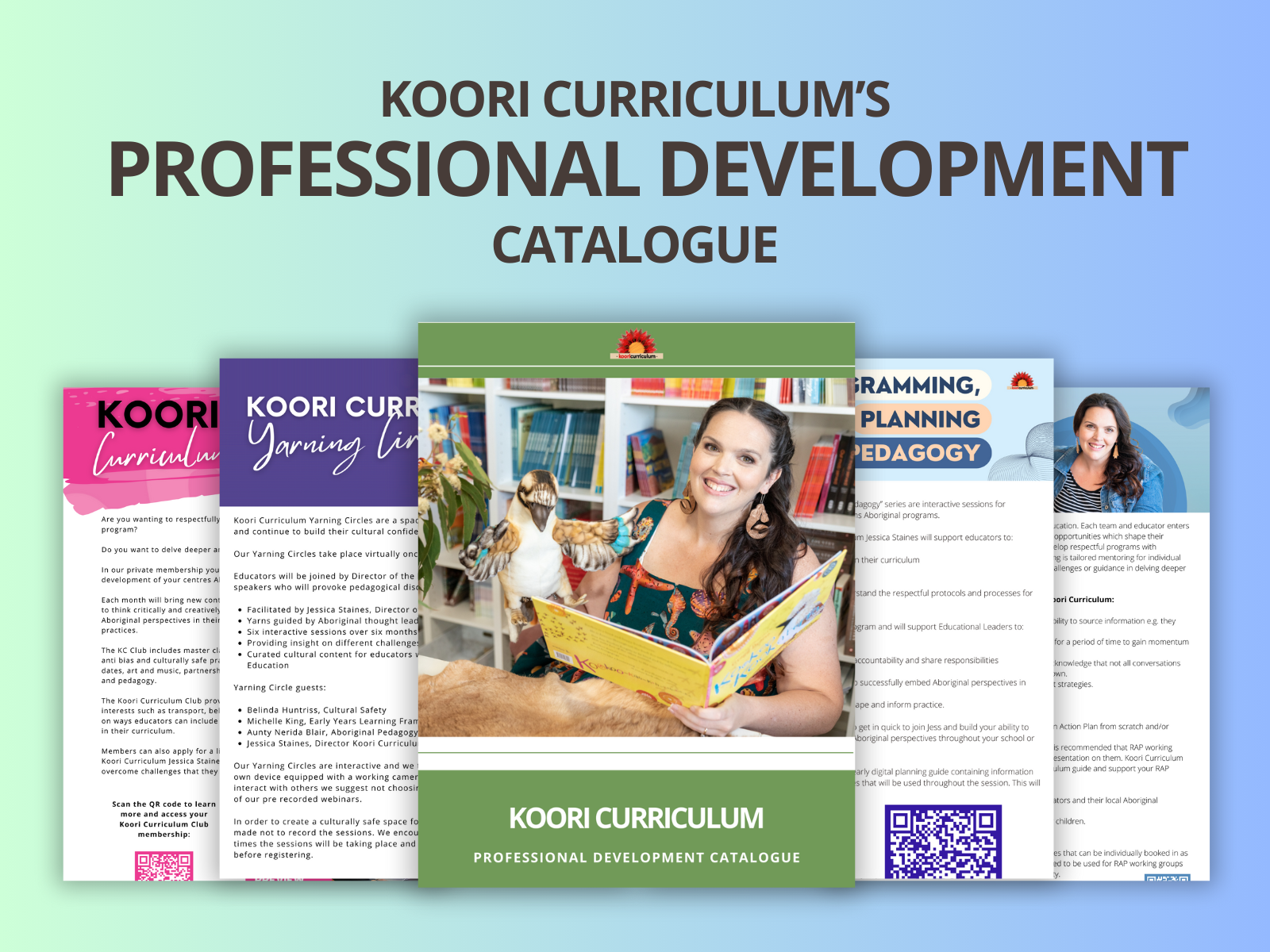
Old Macdonald Has A Farm! Koori Curriculum Adventures
The Koori Curriculum recently visited Orchard Hill in Sydney's west and found themselves at Old Macdonald's Child Care. This early learning service is on a nine acre property and is home to some thirty odd sheep, a couple of cows, a lama or two and an assortment of other farm animals. A lucky 149 children attend this early learning service every day.

As the sun set on the ranch and after my whirl wind tour of the centres nine rooms I met the dedicated group of educators to yarn about how to respectfully embed Aboriginal perspectives in their program. The main discussion points of this workshop were:
- Dreaming stories and if we should be teaching religion/spirituality in early childhood
- The inclusion or exclusion of celebrations in early childhood
- How to embed Aboriginal perspectives in children's interests instead of teaching about Aboriginal people as if they are a topic, theme or interest.

This early learning service has only been operating for twelve months and in this short period of time they have laid a decent foundation and have been focussing on Aboriginal literacy, language and art.
Here are some photos for inspiration from my visit:

I particularly liked the respectful artist in residency programs that the service has created. Early learning Reconciliation Action Plans have three core elements, namely what educators do in the classroom, around the service and out in the community. Educators at times focus almost solely on what they do in the classroom, they can easily forget or are otherwise unaware of the other two crucial components. How can we embed an Aboriginal perspective in our program if we don't have strong relationships with Aboriginal people and communities? Relationships that are ongoing are central and key.




Children can gain so much from being exposed to a wide variety of art works. When including Aboriginal art in early learning programs its important to remember and be mindful of a few things:
1) Aboriginal artists are in the here and now. We have many traditional art styles which we should all embrace however we must strive for balance and also celebrate contemporary Aboriginal art and artists.
2) When facilitating art experiences where you are using an Aboriginal art work as a provocation be mindful that unless the children themselves are Aboriginal what they are creating is not Aboriginal art. It is an Aboriginal inspired art creation/experience.
3) Do not. I repeat DO NOT google and print off Aboriginal art works from the internet to use as a provocation in an art experience. Reciprocity is important and Aboriginal artists must be renumerated.
I have heard many educators say "But I can afford it", my answer is simple "I understand but it doesn't mean that its ok to steal it". There are simple inexpensive ways to precure Aboriginal art including post cards, monthly calendars, poster prints or perhaps try buying and framing a tea towel.
You can also try buying directly for the artist, Aboriginal art centres or from first hand solution markets such as Sydney's Blak Markets. Alternatively just show the image on a laptop or ipad screen.
4) When you have an Aboriginal Art Work always display the artists name and story alongside it.
5) Ensure that the artworks you are purchasing are authentic and not replicas or fake Aboriginal Art. Visit the Aboriginal Art Association website and look up the Indigenous Art Code for more information.



